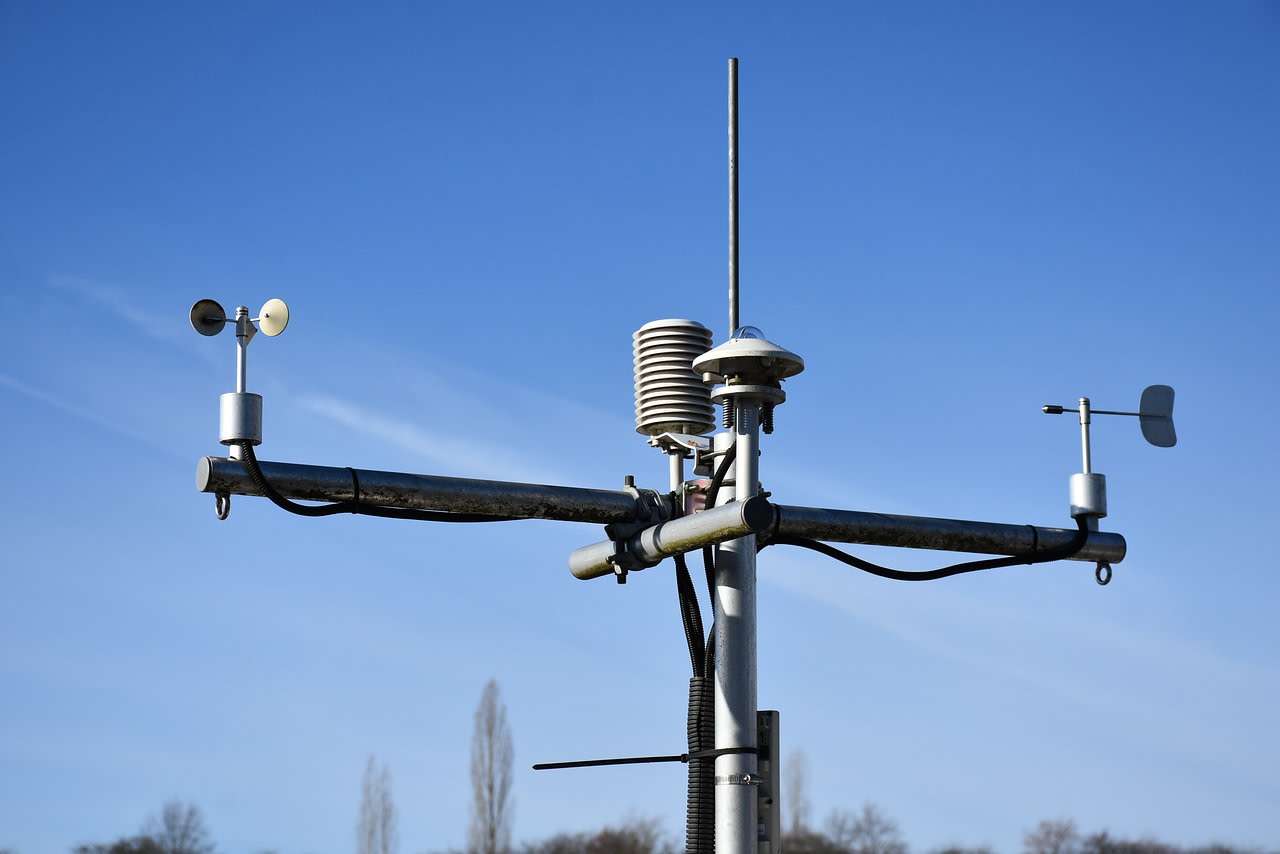- Published 25 Mar 2024
- Last Modified 25 Mar 2024
- 5 min
Using Wind Speed Meters for Railway Weather Safety
Explore how wind speed meters enhance railway weather safety, ensuring efficient operations through precise weather monitoring and risk mitigation.

When it comes to rail transport, ensuring safety and efficiency hinges on not just proximity sensors and electrical contactors, but also accurate and reliable weather monitoring. Among the myriad of meteorological phenomena, wind presents a unique challenge, capable of affecting the stability and operation of trains. This underscores the critical role of precise weather monitoring tools, particularly wind speed meters — otherwise known as anemometers — in safeguarding railway operations against the whims of nature.

The Basics of Anemometry in Railway Operations
An anemometer is a device specifically designed to measure wind speed and direction, a fundamental aspect of weather observation. In the context of railway operations, understanding the nuances of wind behaviour is crucial — the impact of wind extends beyond inconvenience; strong gusts can pose significant risks to the stability of rail infrastructure and the safety of passengers. Accurate wind measurement allows for the implementation of strong wind warnings, mitigating risks by informing timely operational decisions.
Precise measurements of wind speed and direction are pivotal in assessing the risk levels and implementing appropriate safety measures, ensuring the uninterrupted flow of rail industry operations even under adverse conditions. Wind speed meters can come in various forms, including cup, vane, hot-wire, and ultrasonic types, each with its unique mechanism for capturing wind dynamics.
Integrating Wind Speed Meters into Railway Systems
1. Installation and Positioning
The effectiveness of an anemometer is largely determined by its installation and positioning. Best practices dictate that wind speed meters should be placed at strategic points along the railway, where they can accurately capture wind data without obstructions. The choice of location is critical, as it directly influences the reliability of readings and ensures that the data provided is truly reflective of actual conditions.
2. Calibration and Maintenance
To guarantee the accuracy of wind measuring devices, regular calibration and maintenance are imperative. Calibration ensures that the anemometer's readings are precise, aligning with standard measurements. Meanwhile, routine maintenance is essential to sustain the device's long-term reliability and performance, safeguarding against potential inaccuracies that could compromise safety.
3. Integrating Anemometers with Other Weather Monitoring Tools
For a holistic approach to weather safety in railway operations, wind speed meters should be part of a broader weather monitoring system — one that includes the likes of lumen meters for light measurement, too. Integrating anemometer data with other meteorological information creates a comprehensive overview of weather conditions, enhancing the rail industry's ability to make informed decisions. This synergy between various monitoring tools fortifies the railway's resilience against weather-related disruptions and all the innate risks and costs that can naturally come with it.
Interpreting Anemometer Data for Railway Safety

Interpreting the data from wind speed meters involves more than just reading numbers; it requires an understanding of how wind speeds and patterns can influence railway operations. Recognising the implications of varying wind conditions enables rail managers to anticipate and mitigate potential risks, ensuring the safety and efficiency of rail systems.
- High Wind Speeds: Anemometers registering high wind speeds alert railway operators to potential safety risks, especially for high-profile or lightweight trains susceptible to being pushed off track. The data prompts immediate speed restrictions to reduce the risk of derailment or accidents.
- Crosswinds on Vulnerable Sections: When wind measurement tools detect strong crosswinds in areas like bridges or embankments, this information is critical for implementing targeted speed restrictions or temporary halts. It can also inform the long-term placement of physical barriers or wind deflectors to mitigate these risks.
- Sudden Gusts and Wind Shear: Rapid changes in wind speed and direction, detected by anemometers, indicate the risk of wind shear. Operational protocols may include slowing down trains as they approach known problem areas or temporarily suspending service during extreme events.
- Turbulence Caused by Terrain or Structures: Wind speed meters help identify areas where the terrain or nearby structures cause turbulent wind patterns that could destabilise trains. This data aids in designing infrastructure modifications and in strategic planning for new railway lines.
- Directional Wind Changes: Real-time data on wind direction changes, especially in complex terrain, allows for dynamic adjustments to train operations, such as modifying speed or route planning, to ensure safety and minimise delays.
- Speed Reduction Protocols: Anemometer data is essential for activating automated speed reduction protocols. These systems adjust train speeds in real-time, based on current wind conditions, to maintain safety without unnecessary disruptions.
- Operational Adjustments: Continuous monitoring of wind conditions via wind measuring devices enables railway operators to make informed decisions about train operations, including route alterations or temporary service adjustments, to avoid the worst impacts of high winds.
- Emergency Response Planning: High wind alerts from anemometers trigger pre-defined emergency response plans, which may include evacuating trains from certain sections of track, securing loose objects, or reinforcing infrastructure.
- Infrastructure Design and Planning: Long-term anemometer data helps in the design and planning of railway infrastructure, allowing engineers to account for prevailing wind conditions and to construct more resilient and wind-resistant structures.
- Training and Simulation: Training programmes for railway staff can utilise wind speed meter data to simulate high wind scenarios, improving preparedness and response strategies for dealing with wind-related challenges on the railways.
- Predictive Maintenance: Anemometer data can inform predictive maintenance schedules for the railway infrastructure, identifying when and where wind-related wear and tear are most likely to occur, allowing for preventative measures to be taken before issues arise.
- Safety and Efficiency Balance: Analysing anemometer data can also help railway operators balance safety and efficiency, ensuring that measures taken in response to high wind conditions are proportionate to the risk and minimise impact on service.
Popular Anemometer Brands
Related links
- Strain Gauges and Load Cell Technology for Railway Maintenance
- How PPE Workwear Enhances Safety in Rail Manufacturing
- Anemometers
- A Complete Guide to Anemometers
- Understanding Conveyor Parts and Maintenance to Boost Mining Operation Efficiency
- Advancing Railway Safety with High-Quality Cabling Solutions
- Hard Hat Accessories
- Railway Safety and Efficiency: A Guide to Proximity Sensors